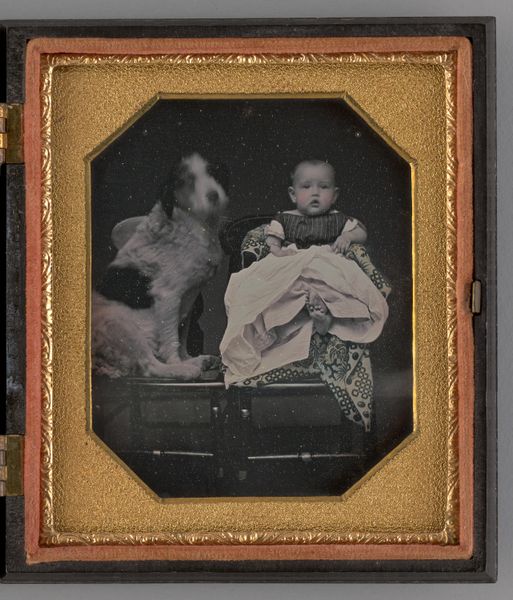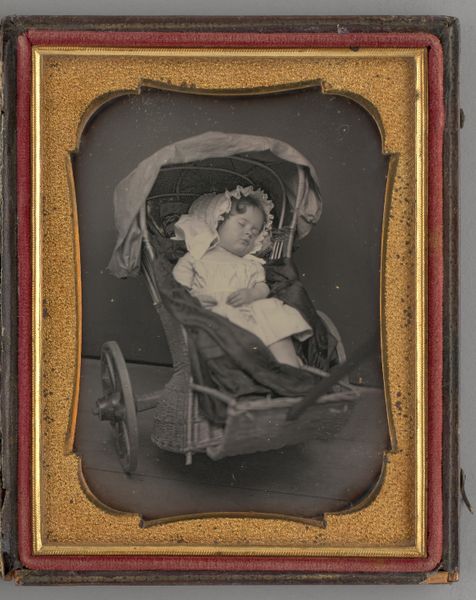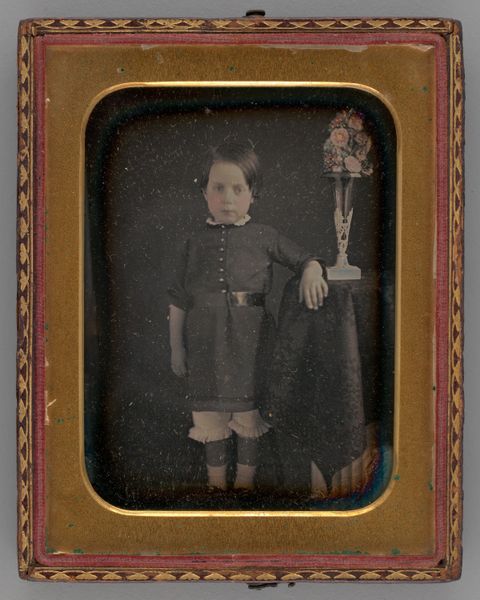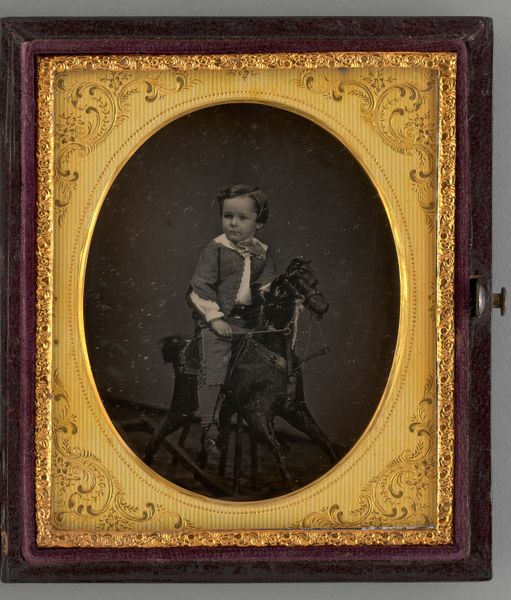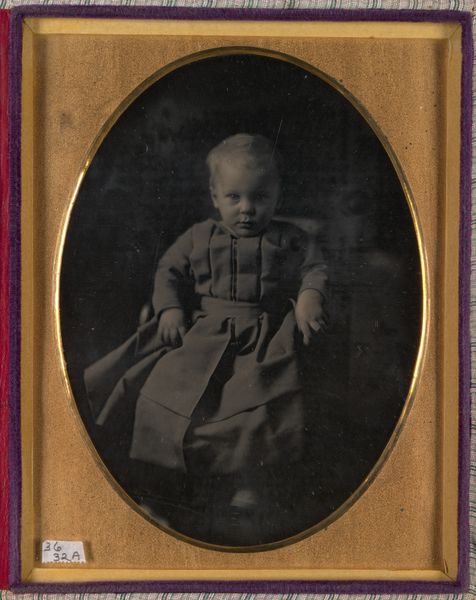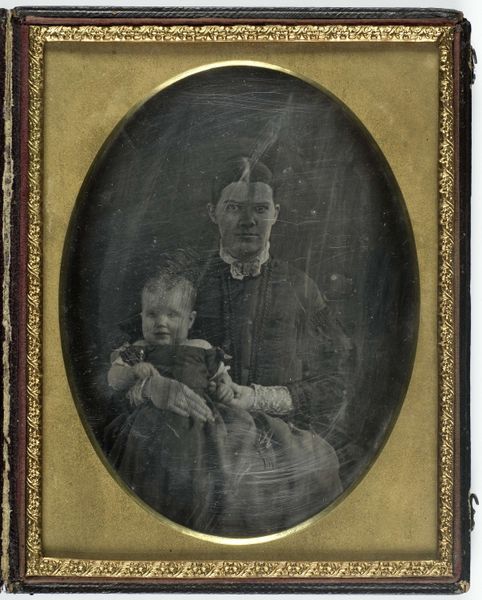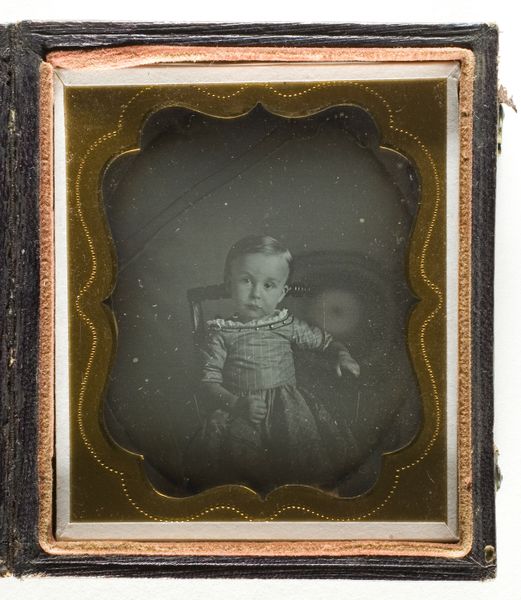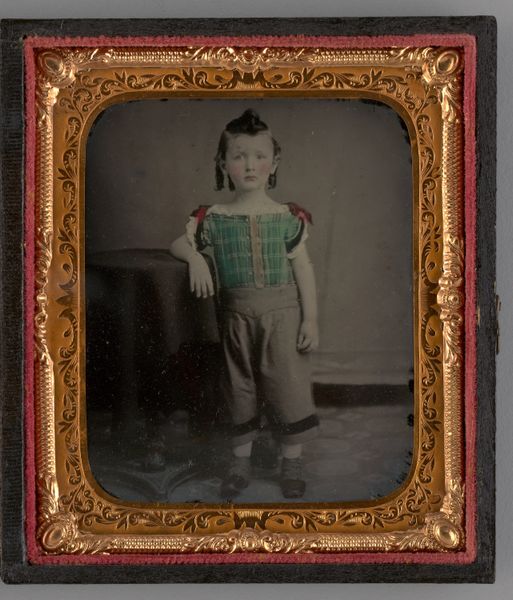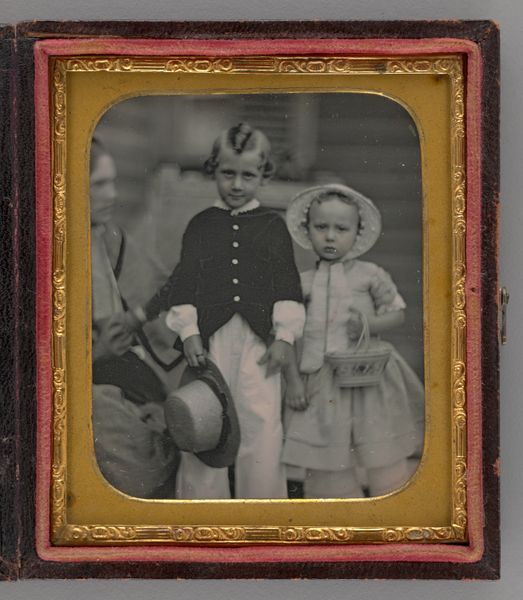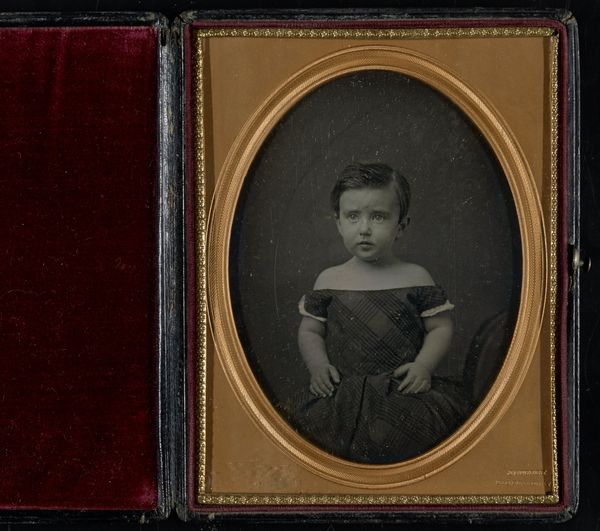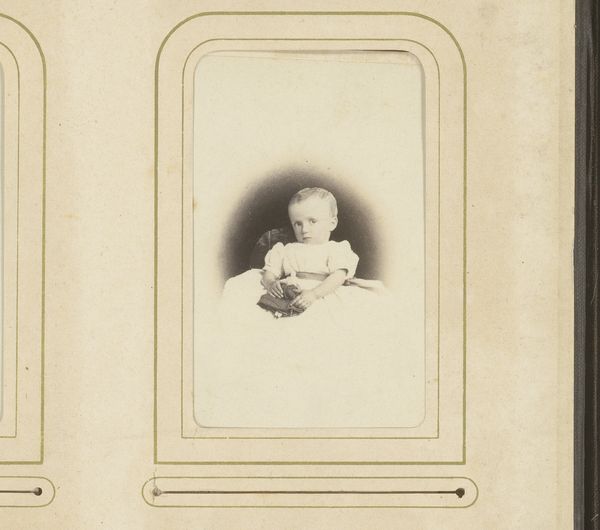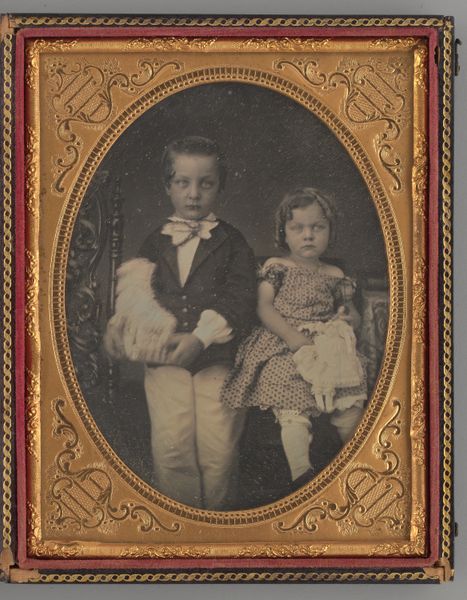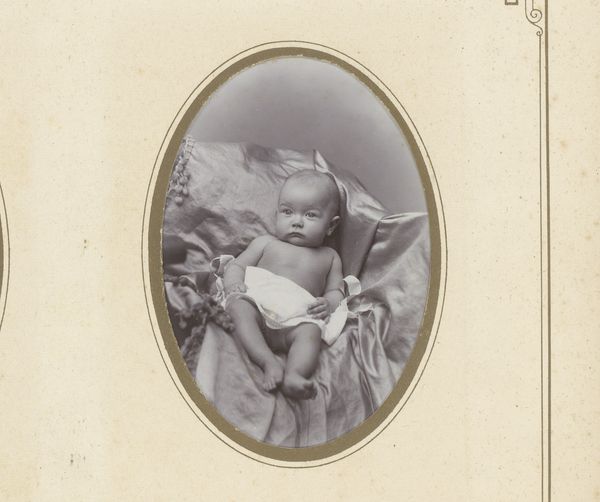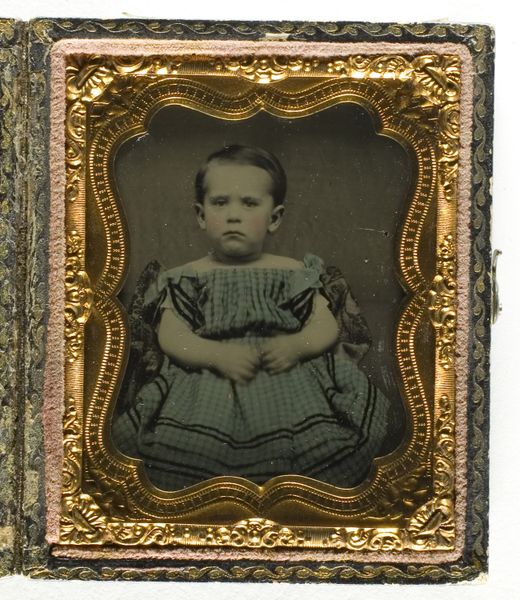
photography, gelatin-silver-print
#
portrait
#
16_19th-century
#
figuration
#
photography
#
child
#
gelatin-silver-print
Dimensions: 8.1 × 6.9 cm (3 1/4 × 2 3/4 in., plate); 9.2 × 15.8 × 1.2 cm (open case); 9.2 × 7.9 × 1.6 cm (case)
Copyright: Public Domain
This is an American daguerreotype, one of the earliest photographic processes, showing an anonymous portrait of a girl. Photography in the mid-19th century was an expensive and laborious process. As such, portraiture was generally limited to the middle and upper classes, subtly reinforcing existing social hierarchies. The girl’s dress and the ornate case suggest a family of some means. But photography was also seen as a democratic art form, offering a wider range of people access to portraiture than ever before. The creation of photography and its institutions, like portrait studios, changed what art was for and who got to participate. Early photography both imitated painting and challenged its role. Historians rely on a variety of period sources to understand the social role of early photography, from census records, newspapers, and etiquette manuals to the photographic objects themselves. These resources help us to understand better the complex ways in which images reflect and shape social life.
Comments
No comments
Be the first to comment and join the conversation on the ultimate creative platform.
